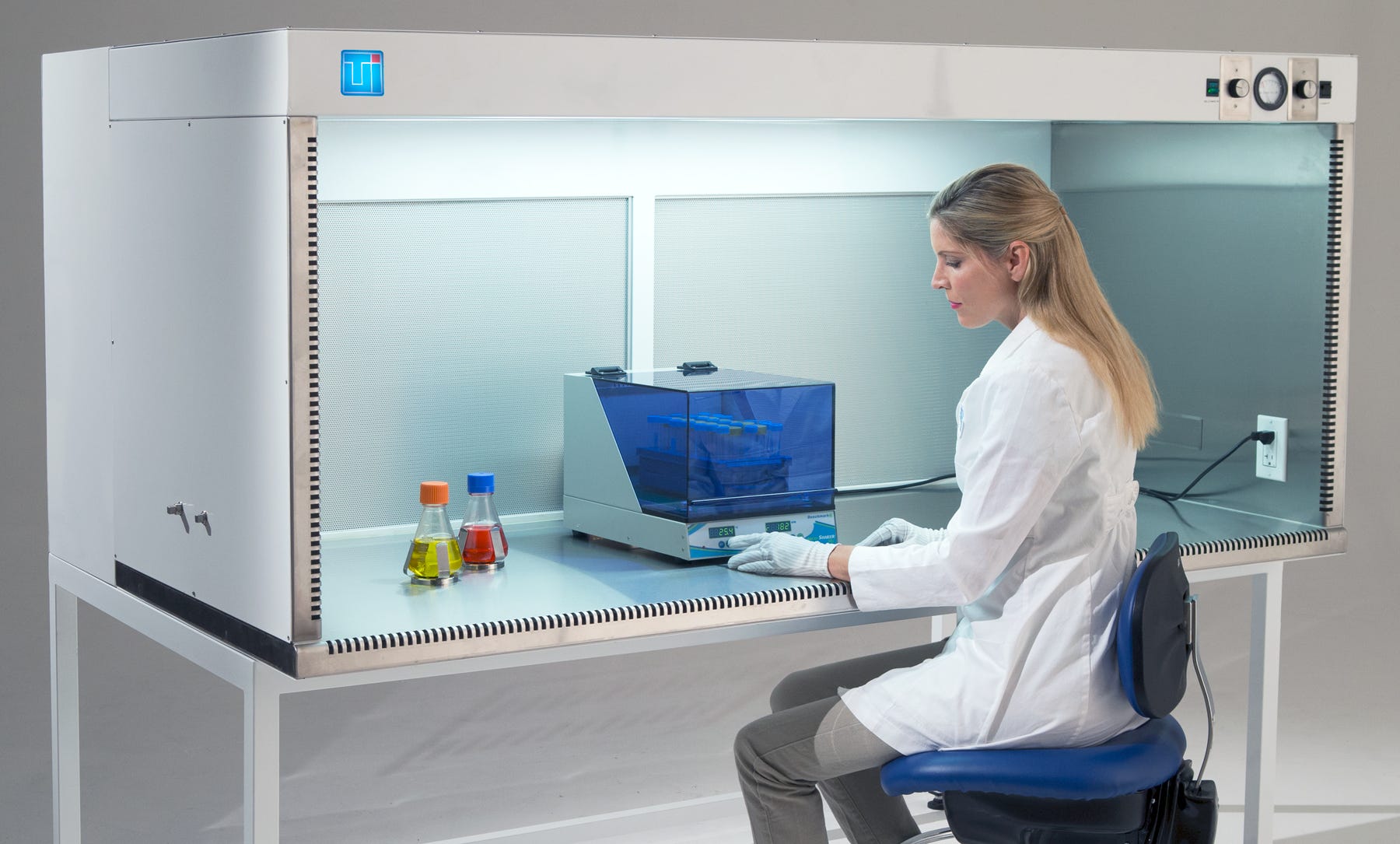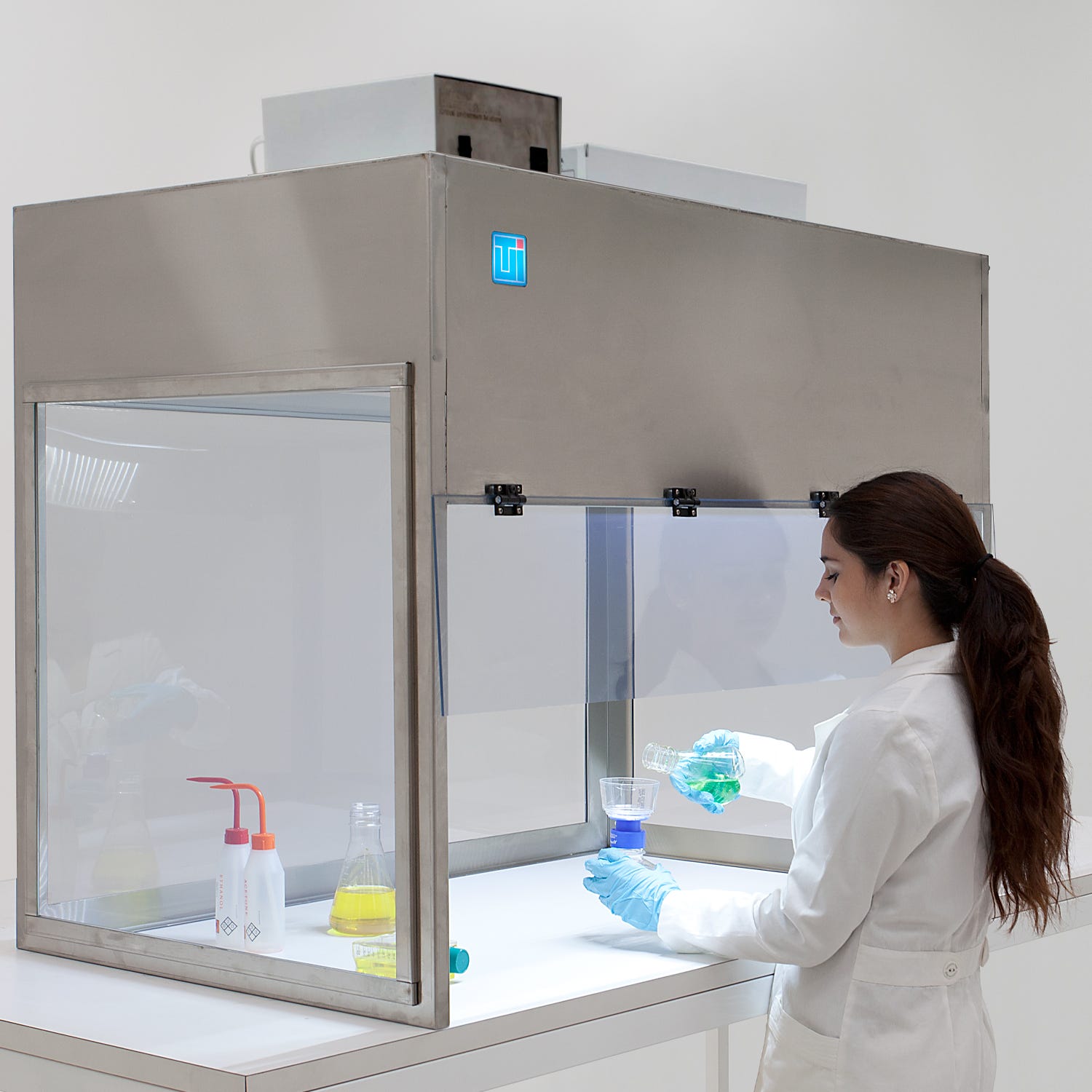
Cleaning a laminar flow hood sounds like a self-explanatory task, but there are plenty of factors to consider when the stakes of sterilization include the integrity of your products. Even more importantly, a clean laminar flow hood helps ensure the safety of patients and consumers on the receiving end of those products.
For environments that require sterility as their primary priority, a methodical approach to cleaning will help eliminate the chances of microbial growth, corrupted test results or cross-contamination between batches of products. It’s tedious, but entirely necessary. A clean laminar flow hood is a safe laminar flow hood, for both personnel and consumers, so it’s critical to apply a strategy that will take contaminants out of the equation.
Sanitize, Disinfect, or Sterilize?
First, identify which level of cleanliness you need per your facility’s standard procedure. There are three levels of cleanliness that you can achieve when cleaning your laminar flow hood:
- Sanitize: a standard cleaning. It removes visible dirt and contaminants, and it reduces the number of germs on a surface, which diminishes the chances of illness, infection and contamination.
- Disinfect: to nearly eliminate fungi, viruses and bacteria by using a cleaning agent. It’s the median cleanliness between sanitization and sterilization.
- Sterilize: to completely free something from microorganisms, to fully remove any germs or bacteria by means of heat, chemicals and/or pressure. A sterilized tool has no contaminants on its surface, visible or otherwise. Sterilization in laboratory settings is usually done through autoclaving, but flow hoods are too large to fit in an autoclave.
Keep in mind that not all chemical cleaning agents are compatible with the material of your laminar flow hood. Know your flow hood’s material and what you can use to clean it—use Terra’s chemical compatibility chart for reference.
Prepare Your Equipment and Supplies
- Wear cleanroom gloves, safety glasses, a cleanroom face mask and any other garb required by your gowning SOP in order to avoid chemical contact with skin.
- Be ready to throw your trash away in a chemical-safe cleanroom garbage bag.
- Paper towels shed particles like a cat sheds fur. You need to use an ISO-friendly cloth or cleanroom wipe.
- Cleanroom-approved swabs clean tight corners and edges better than a folded cloth or gloved fingernail.
- Rubbing dirt into an acrylic or static-dissipative PVC material will scratch the surface. If the flow hood has loose dirt or powders on it that could be abrasive, use a cleanroom vacuum on the area before you begin. If a vacuum isn’t allowed in your cleanroom, gently blot the dirt away instead of wiping or rubbing.
How to Clean and Sterilize a Horizontal Laminar Flow Hood:
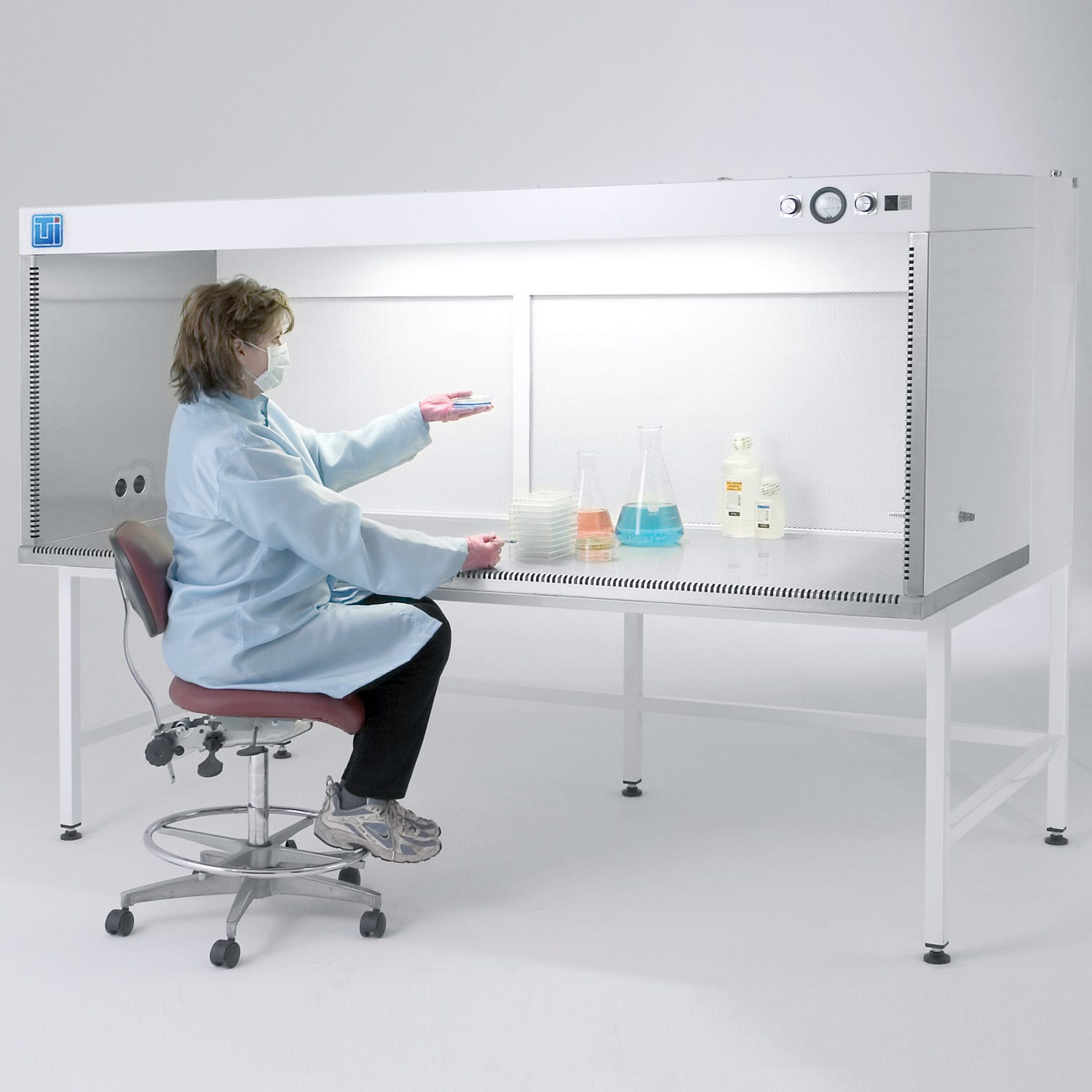
- Turn on the horizontal laminar flow hood and allow air to blow for 30 minutes.
- Fold your cleanroom wipe to form a pad and wet the wipe with a generous amount of your cleaning agent. It shouldn’t drip, but it shouldn’t be dry, either; a dry wipe will tear easier and won’t grip dirt as effectively.
- Clean the ceiling of the hood first, back to front, working your way left to right. Swab the upper edges and back corners.
- Inspect your cleanroom wipe often. If it looks like it has accumulated a significant amount of contaminants, fold it over to expose a fresh side, wet the wipe with your cleaning agent again and continue. Change wipes as frequently as needed.
- Clean the sides of the hood, back to front, working your way down. Swab the side edges and lower back corners.
- Then gently clean the grille of the FFU left to right, top to bottom, making sure to never spray a cleaning agent onto the grill directly, as it can damage the sensitive HEPA filter media directly behind the grille. Instead, spray the cleaning wipe.
- Then clean the work surface left to right, working your way toward the front.
- Repeat this cleaning process using a sterilizing agent such as USP grade sterile 70% isopropanol.
How to Clean and Sterilize a Vertical Laminar Flow Hood:
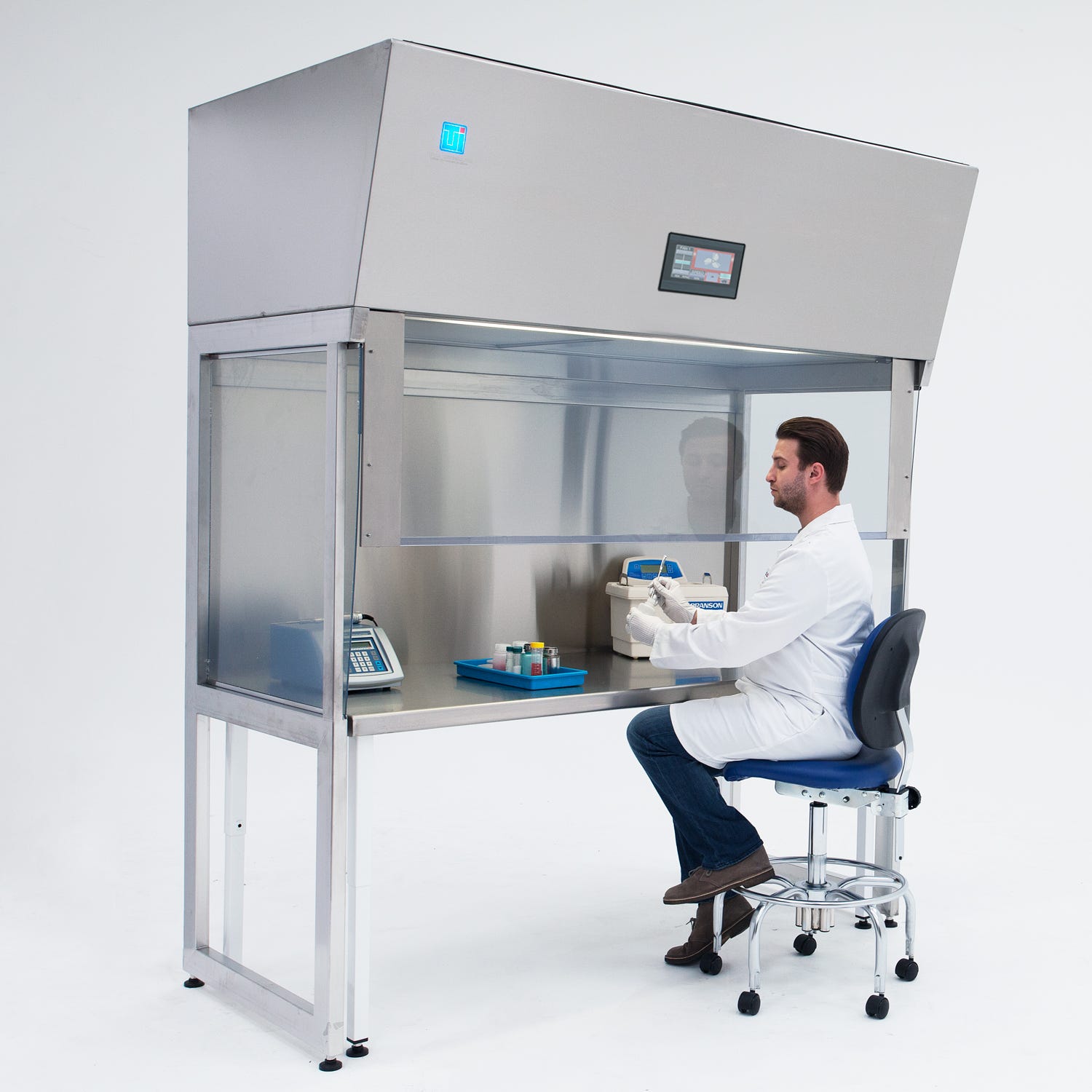
- Turn on the vertical laminar flow hood and allow air to blow for 30 minutes.
- Fold your cleanroom wipe to form a pad and wet the wipe with a generous amount of your cleaning agent. It shouldn’t drip, but it shouldn’t be dry, either; a dry wipe will tear easier and won’t grip dirt as effectively.
- Start from the top of the hood by gently cleaning the grille that covers the filter face of the hood, moving the cloth from left to right and back to front. Never spray a cleaning agent directly into the grille, as it can damage the sensitive HEPA filter media directly behind the grille. Instead, spray the cleaning wipe.
- Inspect your cleanroom wipe often. If it looks like it has accumulated a significant amount of contaminants, fold it over to expose a fresh side, wet the wipe with your cleaning agent again and continue. Change wipes as frequently as needed.
- Clean the rear of the hood, left to right, working your way down. Swab the back edges and upper corners.
- Then clean the sides, back to front, starting at the top and working your way down. Swab the bottom edges and lower back corners.
- Then clean the work surface, back to front, left to right.
- Repeat this cleaning process using a sterilizing agent such as USP grade sterile 70% isopropanol.
Once you have completed these steps, you can test to see if the laminar flow hood is clean by running a wipe along the surface—if it comes up with no dirt, it’s visibly clean. In most cases a visible clean is sufficient to continue using the hood. In the rare cases where it’s not, change the lighting to make it brighter and locate more spots.
The sterilizing process can be repeated as needed between operations throughout the day with just a sterilizing agent. Repeat cleaning steps with disinfectant if the hood becomes dirty or if a spill is not removed by the sterilizing agent.
Other forms of sterilization:
Aerosolized sterilants: disperse vaporized hydrogen peroxide particles, which float around the room until they settle on a surface and kill organisms in the environment. Some kinds of disinfectants will turn into water and oxygen once they have reacted and require no additional mop-up. However, this method doesn’t evenly distribute the disinfectant, the location you want to disinfect has to be sealed and isolated, and you have to wait for the reaction process to complete before returning to work.
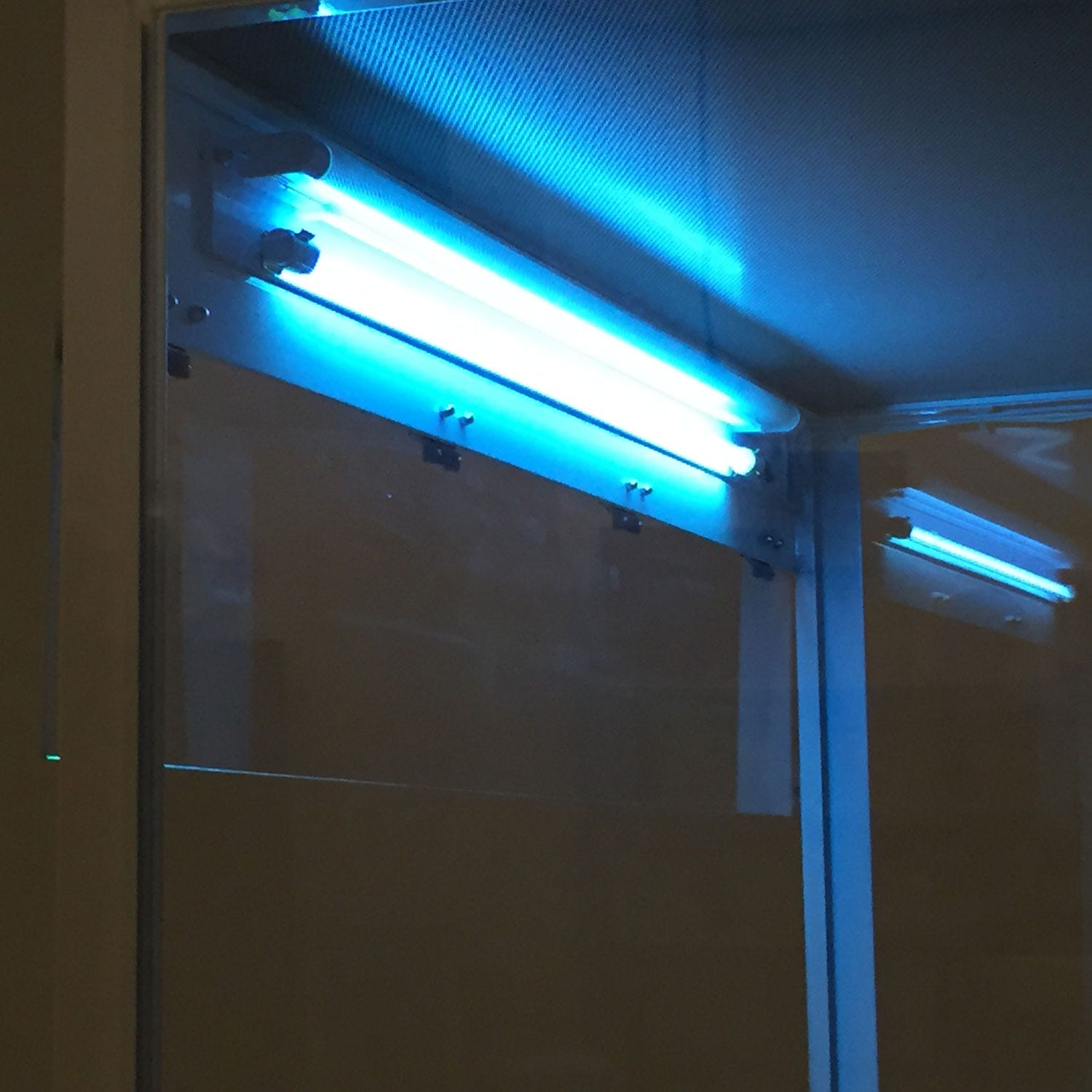
UVC Sterilizer: More commonly used in the disinfection of hoods, a UV Germicidal Sterilizer irradiates and eradicates contamination threats. It works by partially denaturing microbial nucleic acid—less effective against spore-based threats than an aerosolized sterilant, but it serves well as an additional disinfection step after sanitization. A UV Germicidal Lamp is easily installed in the hood and can be activated remotely, so you can sanitize the laminar flow hood when it’s not in use.



